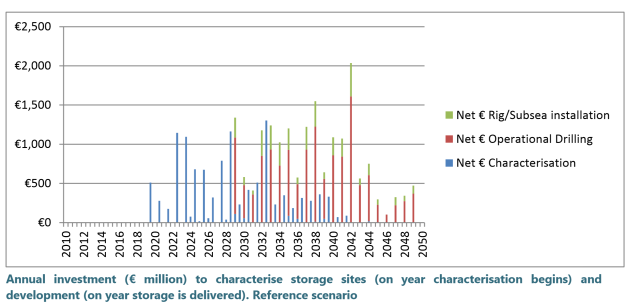
New Managing Director for Bellona Norway
The Board of the Bellona Foundation has appointed former Minister of Climate and the Environment Sveinung Rotevatn as Managing Director of Bellona No...
News

Publish date: November 10, 2014
News
The report Scaling the CO2 storage industry_Bellona Europa was presented by Frederic Hauge during the ZEP General Assembly hosted in the European Parliament.
Carbon capture and storage (CCS) is a critical technology in reducing CO2 emissions from energy and industry. The Intergovernmental Panel on Climate Change (IPCC) estimates that the cost of the necessary emissions reductions would more than double without CCS. A failure to deploy CCS would thus be a failure to avoid a warming world.
The availability of CO2 storage is the linchpin of CCS deployment. A lack of storage capacity could render CO2 capture futile, and in the worst case could discourage investments in CCS projects. A CO2 storage industry that can match the scale of the oil and gas sector will therefore be necessary to enable the necessary scale of CCS deployment.
This report takes a look at the practicalities of developing CO2 storage in Europe and answers three key questions:
Bellona has built a simple yet robust model to answer these questions and give insight into the broad lines of the future scale of CO2 storage activities. It examines storage scenarios for onshore and offshore storage in saline aquifers, depleted oil and gas fields, and for enhanced oil recovery (EOR). The model uses storage data and the anticipated CO2 captured each year to measure the necessary CO2 storage capacity to be deployed throughout Europe. It does so “just in time” and for “just enough” CO2 storage to meet set targets.
The study finds that annual investments in the range of €500 million need to begin by 2020, and increase rapidly into the 2020s, if we are to deliver the storage capacity required by the CCS projects operating in the 2030s and beyond (see figure). The first large scale investments in commercial storage should take place in 2019. This finding shows that what some consider early deployment is in fact timely deployment if we are to reach EU Energy Roadmap 2050 goals. There is therefore a clear and urgent need to have a functioning investment environment for both CCS and CO2 storage operators starting within the next five years. A robust policy framework must therefore be assured as soon as possible.

The study also finds that the scale of the CO2 storage industry will be large. Both in terms of material and human resources, storage operations will be on par with the current oil and gas industry. This could lead to a ‘competition’ for resources between ‘carbon emitters’ and ‘carbon sequesters’, which may delay growth of the storage industry. But it also affords Europe an opportunity to develop a huge new industrial sector that tackles climate change and provides thousands of jobs.
Regarding requirements of a storage industry, injectivity – the rate at which a well can inject CO2 into a suitable storage site – is found to be as critical as storage capacity. Lower injectivity could result in a doubling of the cost and scale of CO2 storage deployment. The role injection capacity plays in realising CCS is often underestimated. More effort is therefore needed to quantify the injectivity of prospective CO2 storage sites.
The importance of injectivity is made even clearer by the finding that most storage will likely take place offshore. This reflects political and planning constraints that exist in Europe, but also the potential: Europe is fortunate in having a huge offshore CO2 storage resource. Costs are generally higher offshore than onshore as greater demands are placed on characterisation and drilling. As reduced injectivity increases the required injection wells, an offshore scenario will have an even greater effect on CO2 storage cost. Appropriate funding mechanisms for full-scale CCS as well as concrete investments in storage site development must therefore be a matter of policy priority.

The Board of the Bellona Foundation has appointed former Minister of Climate and the Environment Sveinung Rotevatn as Managing Director of Bellona No...

Økokrim, Norway’s authority for investigating and prosecuting economic and environmental crime, has imposed a record fine on Equinor following a comp...

Our op-ed originally appeared in The Moscow Times. For more than three decades, Russia has been burdened with the remains of the Soviet ...

The United Nation’s COP30 global climate negotiations in Belém, Brazil ended this weekend with a watered-down resolution that failed to halt deforest...